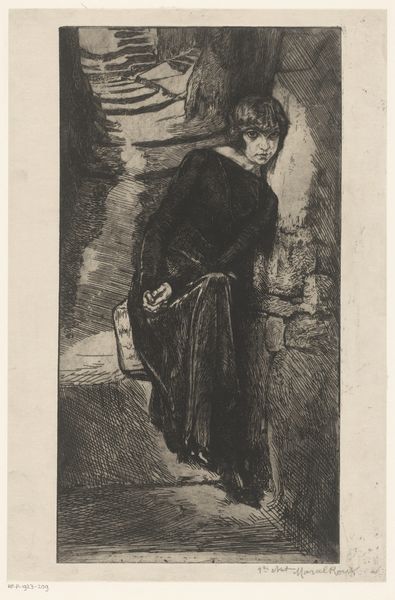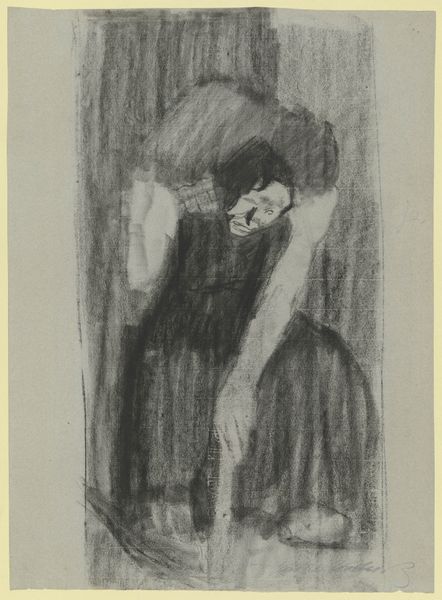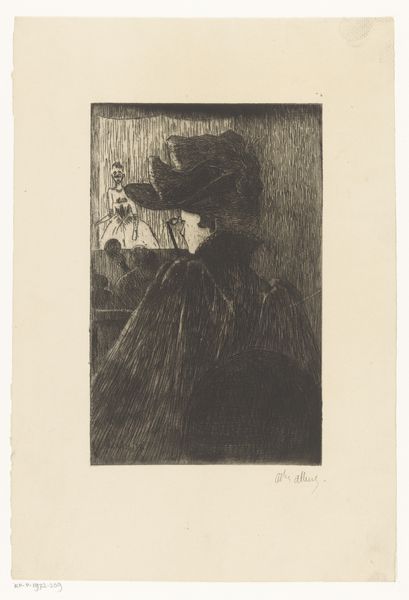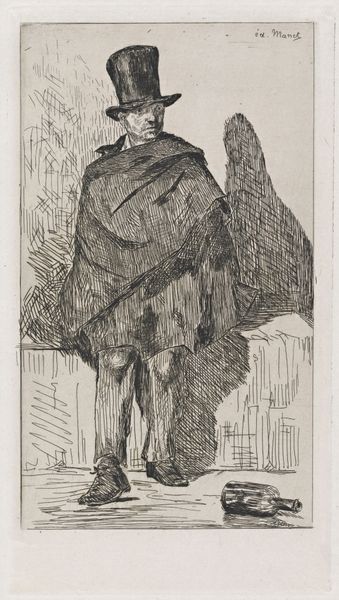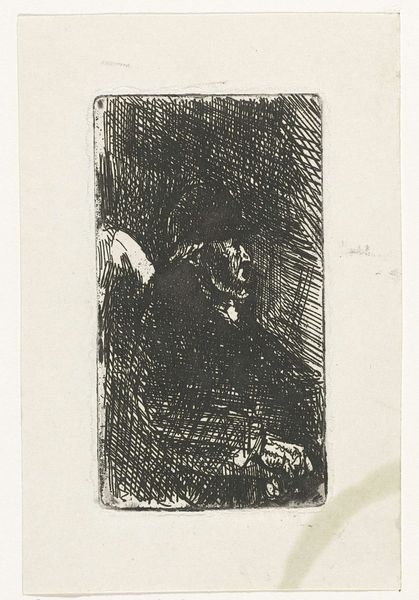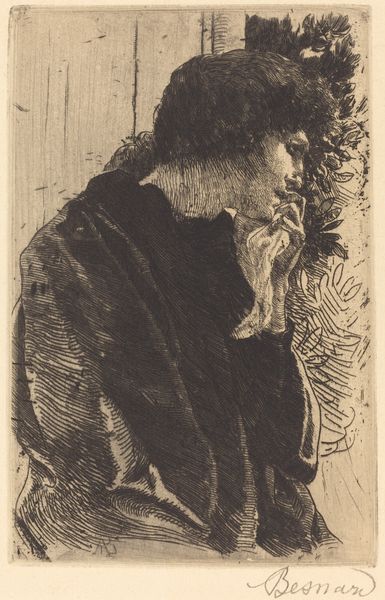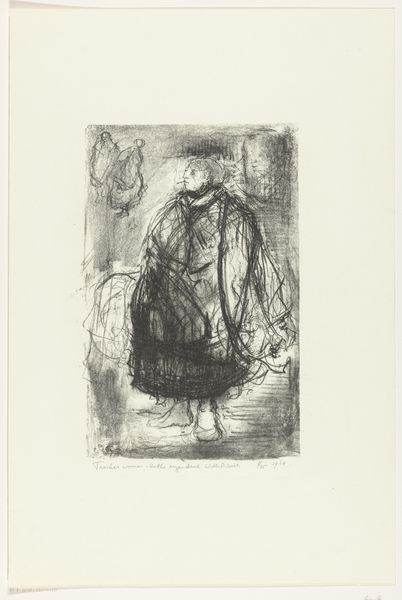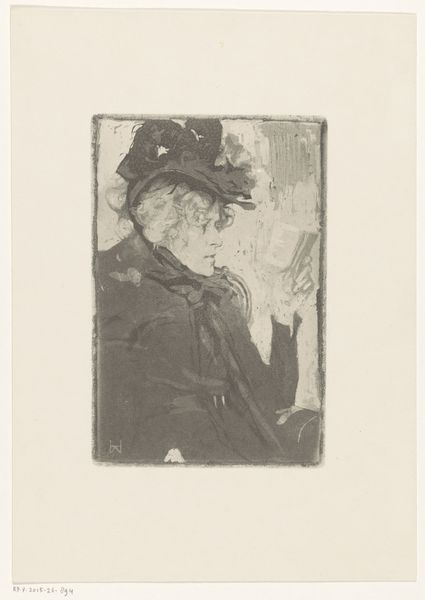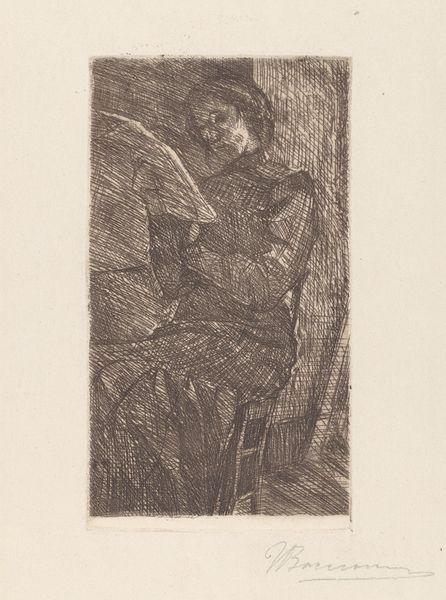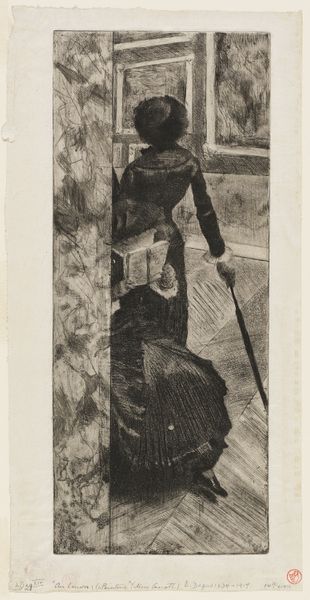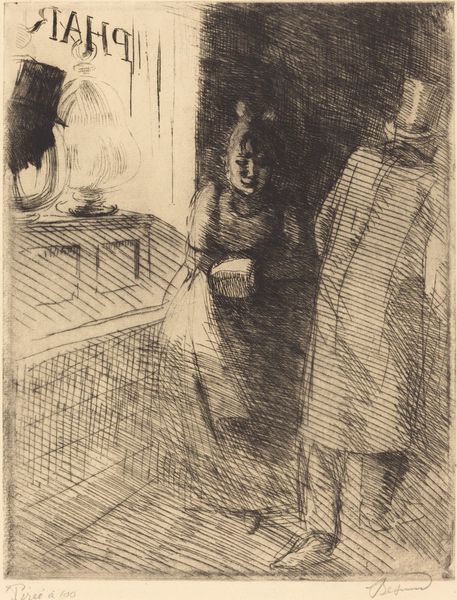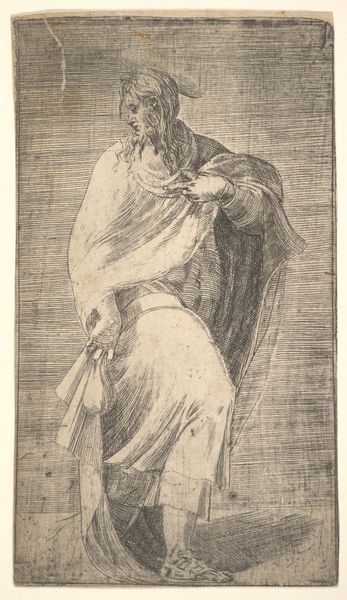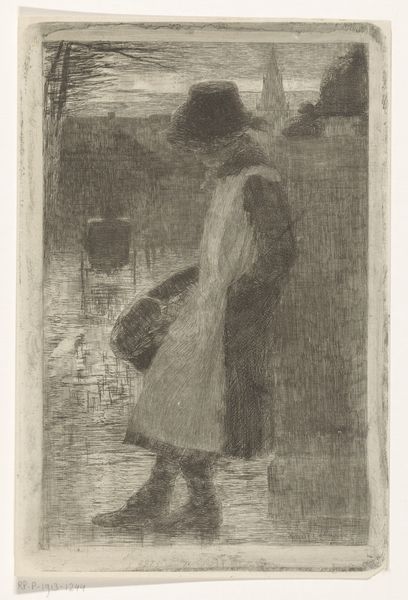
aquatint, print, etching
#
portrait
#
aquatint
#
flâneur
# print
#
impressionism
#
etching
#
realism
Dimensions: 290 mm (height) x 162 mm (width) (plademaal), 250 mm (height) x 145 mm (width) (billedmaal)
Curator: Édouard Manet created this print, "The Absinthe Drinker," sometime between 1867 and 1868. It's rendered as an etching and aquatint. Editor: My immediate sense is one of bleakness. The textures feel rough, even abject. The hunched figure and that empty bottle... it’s a portrait of isolation. Curator: Indeed. The print depicts an alcoholic chiffonier, someone who would scavenge through trash in Paris. Manet’s image resonates with a time of immense social and economic change in Haussmann's Paris. The rebuilding projects forced many into destitution. Editor: I’m struck by the materiality here, the lines, the way the plate must have been bitten by the acid. Look how Manet coaxes such subtle tones out of what are, essentially, just a series of marks. I find beauty even in the harshness of the process. How was this figure received at the time? Curator: Well, it sparked considerable controversy. Some critics found it distasteful, focusing on the subject’s moral character, seeing him as emblematic of social decay, despite Baudelaire’s support. However, it aligned with a Realist trend to depict modern life, flaws and all. Editor: And the printmaking itself—it allows for multiple copies. Was Manet trying to disseminate this image broadly? Was he intentionally making it accessible, using the technology of print to reach a wider audience with this critique? Curator: Possibly. Printmaking held a strategic position. Through reproducible forms, he could bypass the official Salon system, influencing public opinion directly and building his artistic platform. Editor: It makes you think about the economics of art then and now. Was he challenging the prevailing art establishment simply by choosing such a subject matter, and, further, by embracing printmaking, a readily reproduced medium? It questions what "high art" is and who gets to decide. Curator: Absolutely. He blurred the lines between high and low subjects and methods, contributing to a broader re-evaluation of art’s role in reflecting and shaping societal attitudes. Editor: Looking at it now, through both a technical and historical lens, it’s more than just a portrait of a drunkard; it's a potent comment on a changing society and art's responsibility within it. Curator: Exactly, and Manet’s willingness to challenge artistic and social norms through the creation and dissemination of imagery secures the significance of his artistic production.
Comments
No comments
Be the first to comment and join the conversation on the ultimate creative platform.
